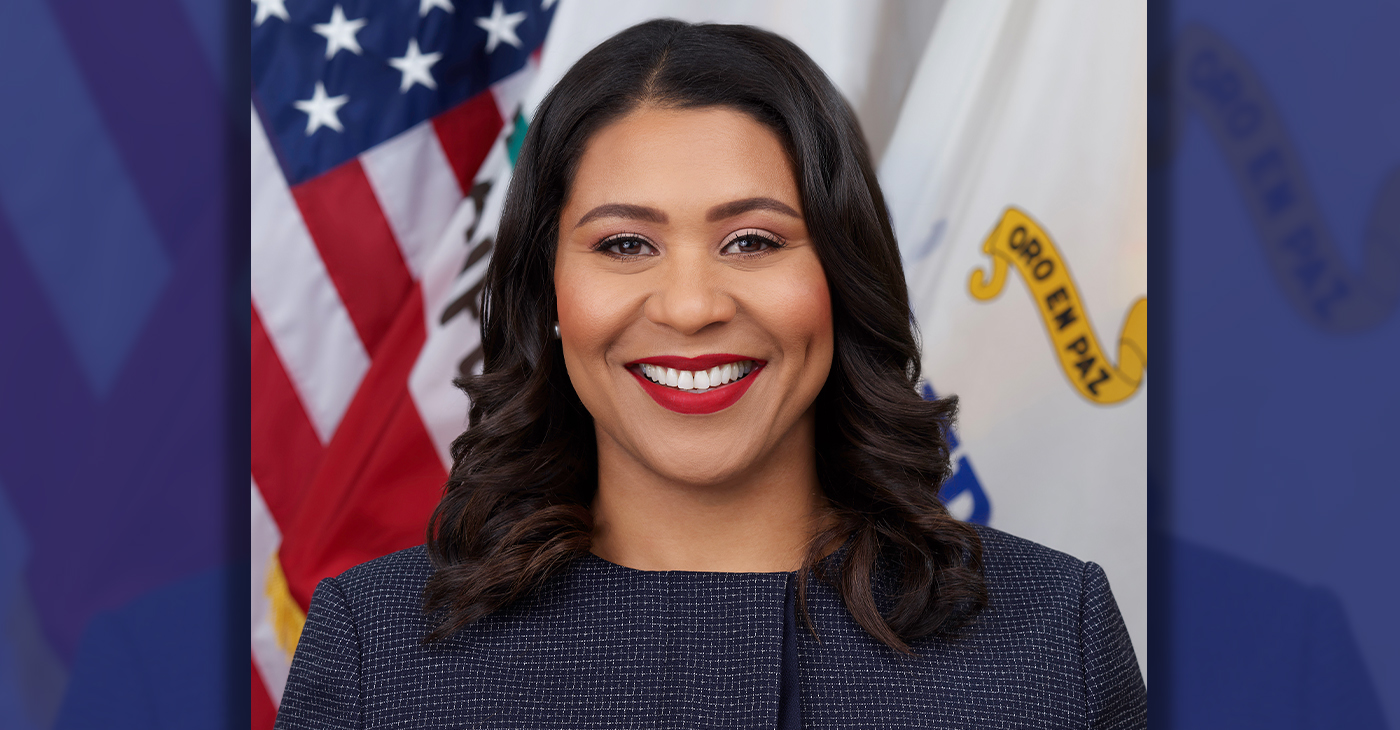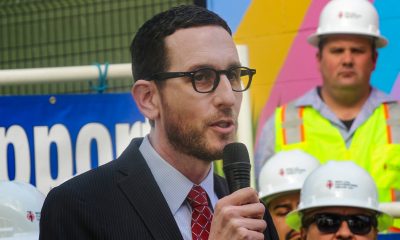Politics
How Obama Reversed Course on Federal College Ratings

President Barack Obama speaks at the University of Wisconsin at La Crosse, in La Crosse, Wis., Thursday, July 2, 2015, about the economy and to promote a proposed Labor Department rule that would make more workers eligible for overtime. (AP Photo/Morry Gash)
JOSH LEDERMAN, Associated Press
WASHINGTON (AP) — President Barack Obama dearly wanted to get the government in the business of rating colleges and universities based on value and affordability, promising a new system by 2015. Now that goal is shriveling under the weight of a concerted opposition from universities, lawmakers and bureaucrats in Obama’s own administration.
Nearly two years after the president, standing before a crowd of 7,000 at the University at Buffalo, unveiled the bold proposal as a way to curb soaring college costs, his administration has quietly but drastically scaled back the initiative. No longer does the federal government intend to use a formula to score schools based on factors like price, average student debt and graduation rates, as Obama had envisioned.
Instead, the new tool will allow prospective students to decide which factors are important to them, then draw their own conclusions from the statistics. But the Education Department declined to say which new statistics the tool will offer that aren’t already available on existing government websites.
Abandoning the original plan marked the latest in a series of stumbles for Obama’s education priorities. In his 2013 State of the Union address, Obama called for expanding access to pre-kindergarten to all American children, and in his 2015 address, he pushed a $60 billion plan to offer two years of free community college. Neither proposal has gained any traction.
The Education Department said it’s still determining what the revised college tool will look like, but that it’s still on track to roll it out by the start of the 2015-2016 academic year, roughly two months from now.
“It is anything but a retreat,” Education Department Undersecretary Ted Mitchell said in an interview. “It’s a retooling and, we think, an advance on the original concept.”
Yet Obama’s goal, as he described when he announced the plan in August 2013, was to create an alternative to private rankings like U.S. News and World Report whose formulas incentivize schools to “game the numbers” and even raise costs. Instead, Obama sought a system that prioritized whether schools are enrolling and graduating poorer students and whether their graduates succeed in the workforce.
“I think we should rate colleges based on opportunity — are they helping students from all kinds of backgrounds succeed — and on outcomes, on their value to students and parents,” Obama said. He took it a step further by proposing that Congress eventually tie a school’s eligibility for federal financial aid to its score in the new ratings system.
Resistance to Obama’s plan was swift, vehement and nearly universal.
Associations representing colleges with traditionally conflicting interests — such as community colleges and private universities — all lined up in opposition, warning the project was too complex, too subjective and too dependent on shoddy data to ever work fairly. As the Education Department mounted an extensive, lengthy listening tour across the country, college presidents warned of dire unintended consequences and implored the government to reconsider.
On Capitol Hill, the proposal drew pushback not only from the president’s traditional Republican foes, but also some Democrats. Sen. Lamar Alexander, R-Tenn., a former education secretary and chair of the Senate’s education panel, took to the Senate floor to threaten an amendment blocking the ratings system. And in the House, Republican Rep. Bob Goodlatte of Virginia and Democratic Rep. Michael Capuano of Massachusetts — two states with large numbers of colleges — joined forces to sponsor a resolution opposing Obama’s plan.
“Do I think they would have continued if no one had pushed back? Of course I do,” Capuano said.
But for nearly two years, the administration stuck to the original plan. In a blog post in December 2014, the Education Department said it was considering rating schools as high-performing, medium-performing or low-performing and outlined a few potential metrics, but disappointed many by failing to flesh out the formula it would use to assign ratings.
Driving the decision to stick with a ratings system was Obama, who was dead-set on carrying out his original vision for the project, according to interviews with nearly a dozen congressional aides, administration officials and college association leaders. Many of them spoke on condition of anonymity to avoid criticizing the president publicly.
From the start, career bureaucrats and data experts at the Education Department said the idea wasn’t feasible, but met continued White House resistance, those officials said. Technical experts in the education industry that the administration consulted offered similar warnings. Eventually, higher-level Education Department officials grew convinced the plan was unworkable, and persuaded the White House to allow a scaled-back approach devoid of hard-and-fast ratings.
“We are right where the president wanted us to be in terms of making progress toward his vision,” said James Kvaal, deputy director of the White House’s Domestic Policy Council.
University associations that had fought the proposal praised the Obama administration for taking their concerns seriously and eventually agreeing to abandon the initial plan, calling it a rare example of the government acknowledging its own missteps.
“They really did listen on this,” said Sarah Flanagan, the top lobbyist for the National Association of Independent Colleges and Universities. “The more they looked into it, they realized it wasn’t doable.”
___
Reach Josh Lederman on Twitter at http://twitter.com/joshledermanAP
Copyright 2015 The Associated Press. All rights reserved. This material may not be published, broadcast, rewritten or redistributed.
Activism
Oakland Post: Week of April 24 – 30, 2024
The printed Weekly Edition of the Oakland Post: Week of April 24 – 30, 2024

To enlarge your view of this issue, use the slider, magnifying glass icon or full page icon in the lower right corner of the browser window. ![]()
Bay Area
MAYOR BREED ANNOUNCES $53 MILLION FEDERAL GRANT FOR SAN FRANCISCO’S HOMELESS PROGRAMS
San Francisco, CA – Mayor London N. Breed today announced that the U.S. Department of Housing and Urban Development (HUD) has awarded the city a $53.7 million grant to support efforts to renew and expand critical services and housing for people experiencing homelessness in San Francisco.

FOR IMMEDIATE RELEASE:
Wednesday, January 31, 2024
Contact: Mayor’s Office of Communications, mayorspressoffice@sfgov.org
***PRESS RELEASE***
MAYOR BREED ANNOUNCES $53 MILLION FEDERAL GRANT FOR SAN FRANCISCO’S HOMELESS PROGRAMS
HUD’s Continuum of Care grant will support the City’s range of critical services and programs, including permanent supportive housing, rapid re-housing, and improved access to housing for survivors of domestic violence
San Francisco, CA – Mayor London N. Breed today announced that the U.S. Department of Housing and Urban Development (HUD) has awarded the city a $53.7 million grant to support efforts to renew and expand critical services and housing for people experiencing homelessness in San Francisco.
HUD’s Continuum of Care (CoC) program is designed to support local programs with the goal of ending homelessness for individuals, families, and Transitional Age Youth.
This funding supports the city’s ongoing efforts that have helped more than 15,000 people exit homelessness since 2018 through City programs including direct housing placements and relocation assistance. During that time San Francisco has also increased housing slots by 50%. San Francisco has the most permanent supportive housing of any county in the Bay Area, and the second most slots per capita than any city in the country.
“In San Francisco, we have worked aggressively to increase housing, shelter, and services for people experiencing homelessness, and we are building on these efforts every day,” said Mayor London Breed. “Every day our encampment outreach workers are going out to bring people indoors and our City workers are connecting people to housing and shelter. This support from the federal government is critical and will allow us to serve people in need and address encampments in our neighborhoods.”
The funding towards supporting the renewal projects in San Francisco include financial support for a mix of permanent supportive housing, rapid re-housing, and transitional housing projects. In addition, the CoC award will support Coordinated Entry projects to centralize the City’s various efforts to address homelessness. This includes $2.1 million in funding for the Coordinated Entry system to improve access to housing for youth and survivors of domestic violence.
“This is a good day for San Francisco,” said Shireen McSpadden, executive director of the Department of Homelessness and Supportive Housing. “HUD’s Continuum of Care funding provides vital resources to a diversity of programs and projects that have helped people to stabilize in our community. This funding is a testament to our work and the work of our nonprofit partners.”
The 2024 Continuum of Care Renewal Awards Include:
- $42.2 million for 29 renewal PSH projects that serve chronically homeless, veterans, and youth
- $318,000 for one new PSH project, which will provide 98 affordable homes for low-income seniors in the Richmond District
- $445,00 for one Transitional Housing (TH) project serving youth
- $6.4 million dedicated to four Rapid Rehousing (RRH) projects that serve families, youth, and survivors of domestic violence
- $750,00 for two Homeless Management Information System (HMIS) projects
- $2.1 million for three Coordinated Entry projects that serve families, youth, chronically homeless, and survivors of domestic violence
In addition, the 2023 CoC Planning Grant, now increased to $1,500,000 from $1,250,000, was also approved. Planning grants are submitted non-competitively and may be used to carry out the duties of operating a CoC, such as system evaluation and planning, monitoring, project and system performance improvement, providing trainings, partner collaborations, and conducting the PIT Count.
“We are very appreciative of HUD’s support in fulfilling our funding request for these critically important projects for San Francisco that help so many people trying to exit homelessness,” said Del Seymour, co-chair of the Local Homeless Coordinating Board. “This funding will make a real difference to people seeking services and support in their journey out of homelessness.”
In comparison to last year’s competition, this represents a $770,000 increase in funding, due to a new PSH project that was funded, an increase in some unit type Fair Market Rents (FMRs) and the larger CoC Planning Grant. In a year where more projects had to compete nationally against other communities, this represents a significant increase.
Nationally, HUD awarded nearly $3.16 billion for over 7,000 local homeless housing and service programs including new projects and renewals across the United States.
Activism
Oakland Post: Week of April 17 – 23, 2024
The printed Weekly Edition of the Oakland Post: Week of April 17 – 23, 2024

To enlarge your view of this issue, use the slider, magnifying glass icon or full page icon in the lower right corner of the browser window. ![]()
-

 Community2 weeks ago
Community2 weeks agoFinancial Assistance Bill for Descendants of Enslaved Persons to Help Them Purchase, Own, or Maintain a Home
-

 Activism4 weeks ago
Activism4 weeks agoOakland Post: Week of April 3 – 6, 2024
-

 Business2 weeks ago
Business2 weeks agoV.P. Kamala Harris: Americans With Criminal Records Will Soon Be Eligible for SBA Loans
-

 Community2 weeks ago
Community2 weeks agoAG Bonta Says Oakland School Leaders Should Comply with State Laws to Avoid ‘Disparate Harm’ When Closing or Merging Schools
-

 Activism3 weeks ago
Activism3 weeks agoOakland Post: Week of April 10 – 16, 2024
-

 Community2 weeks ago
Community2 weeks agoOakland WNBA Player to be Inducted Into Hall of Fame
-

 Community2 weeks ago
Community2 weeks agoRichmond Nonprofit Helps Ex-Felons Get Back on Their Feet
-

 Community2 weeks ago
Community2 weeks agoRPAL to Rename Technology Center for Retired Police Captain Arthur Lee Johnson






















































